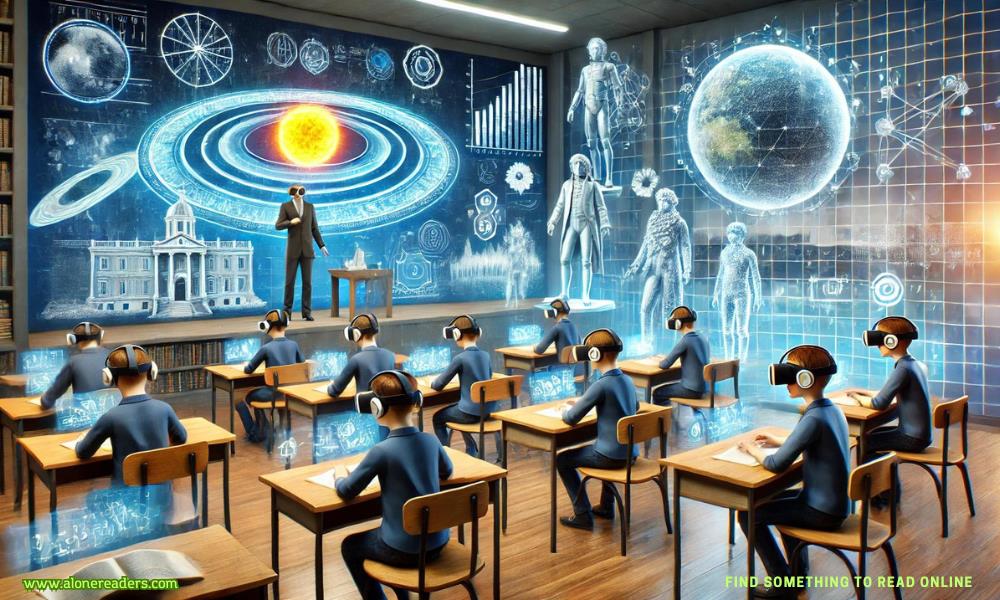
In recent years, Virtual Reality (VR) has emerged as a powerful tool in various industries, and education is no exception. By offering immersive and interactive learning experiences, VR is transforming the way students engage with educational content. From elementary schools to universities, VR is providing new opportunities for both educators and learners, making education more engaging, accessible, and effective.
Virtual Reality has come a long way since its inception. Initially, VR was predominantly used in gaming and entertainment, but its potential in education quickly became apparent. Early adopters saw the benefits of VR in creating immersive simulations and environments that traditional teaching methods could not achieve. Today, VR technology is more accessible and affordable, allowing more educational institutions to integrate it into their curricula.
Enhanced Engagement and Motivation
VR creates a highly engaging learning environment by immersing students in a virtual world where they can interact with the subject matter. This level of engagement is particularly beneficial for students who struggle with traditional learning methods. For instance, history lessons can come to life as students virtually explore ancient civilizations, and science classes can be more captivating with interactive 3D models of the human body.
Improved Retention and Understanding
Research has shown that immersive learning experiences can significantly improve knowledge retention and understanding. When students can visualize and interact with complex concepts, they are more likely to remember and comprehend the material. For example, medical students can practice surgeries in a virtual environment, enhancing their skills and confidence before performing real procedures.
Safe and Controlled Learning Environments
VR provides a safe space for students to experiment and learn from their mistakes without real-world consequences. This is especially useful in fields that involve high-risk scenarios, such as chemistry, aviation, and medical training. Students can repeat procedures as many times as necessary to master the skills, which is often not feasible in a traditional classroom setting.
Accessibility and Inclusivity
Virtual Reality can bridge the gap for students with disabilities or those who face geographical and financial barriers to education. VR can create customized learning experiences that cater to individual needs, making education more inclusive. For example, students with physical disabilities can participate in virtual field trips that would otherwise be inaccessible.
Collaborative Learning
VR facilitates collaborative learning by allowing students to work together in a virtual environment. They can engage in group projects, discussions, and problem-solving activities, regardless of their physical location. This is particularly beneficial in higher education, where students from different parts of the world can collaborate on research projects and share knowledge.
Virtual Classrooms
Virtual classrooms are perhaps the most direct application of VR in education. These environments simulate a physical classroom, allowing students and teachers to interact in real-time. Tools like VR headsets and hand controllers enable students to raise their hands, write on virtual whiteboards, and even have one-on-one conversations with their teachers.
Virtual Field Trips
Virtual field trips can transport students to places they might never visit in real life. Whether it's exploring the surface of Mars, diving into the depths of the ocean, or touring historical landmarks, VR makes these experiences possible. These virtual excursions not only enhance learning but also stimulate curiosity and a love for exploration.
Simulations and Lab Experiments
In subjects like chemistry and physics, VR can simulate lab experiments that might be too dangerous, expensive, or time-consuming to conduct in real life. Students can mix chemicals, observe reactions, and conduct experiments in a controlled virtual environment. This hands-on approach helps solidify theoretical knowledge through practical application.
Language Learning
Language learning can be significantly enhanced with VR. Students can practice speaking and listening in immersive environments that mimic real-life situations. For instance, a student learning French can virtually navigate a Parisian market, converse with vendors, and improve their language skills through interactive scenarios.
Medical and Healthcare Training
Medical and healthcare training are among the most advanced applications of VR in education. Medical students can use VR to practice surgeries, diagnose illnesses, and understand human anatomy in a highly detailed and interactive manner. This practical experience is invaluable in preparing them for real-world medical challenges.
While the benefits of VR in education are substantial, there are challenges to its widespread adoption. The cost of VR equipment and the need for technical expertise can be barriers for some institutions. Additionally, creating high-quality educational content for VR requires significant time and resources.
However, as technology continues to advance and become more affordable, these challenges are likely to diminish. The future of VR in education looks promising, with continuous innovations enhancing the learning experience. The integration of artificial intelligence (AI) and VR could further personalize education, adapting to each student's learning style and pace.
Conclusion
Virtual Reality is undoubtedly transforming education by providing immersive, engaging, and effective learning experiences. From virtual classrooms to medical training simulations, VR is opening up new possibilities for students and educators alike. As technology continues to evolve, the impact of VR on education will only grow, making learning more accessible and inclusive for all.
By embracing VR, educational institutions can prepare students for the future, equipping them with the skills and knowledge needed to thrive in an increasingly digital world. The journey of integrating VR into education is just beginning, and the potential for revolutionizing learning experiences is immense.